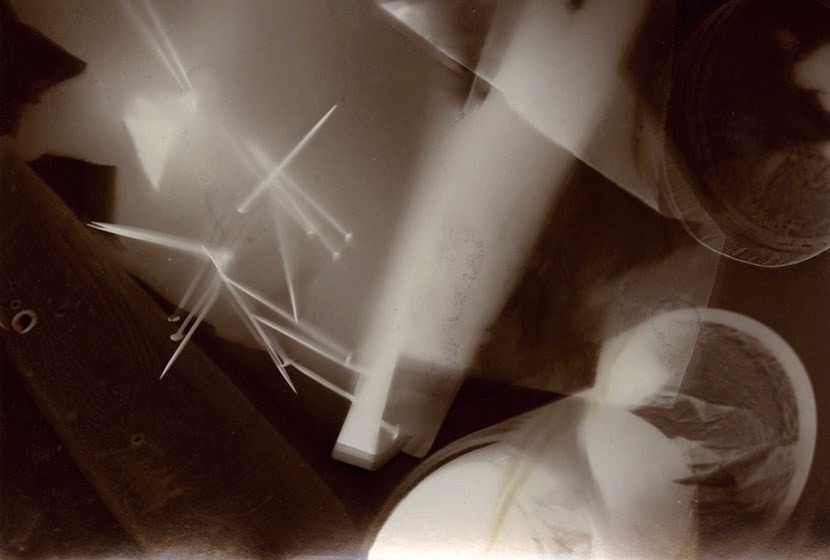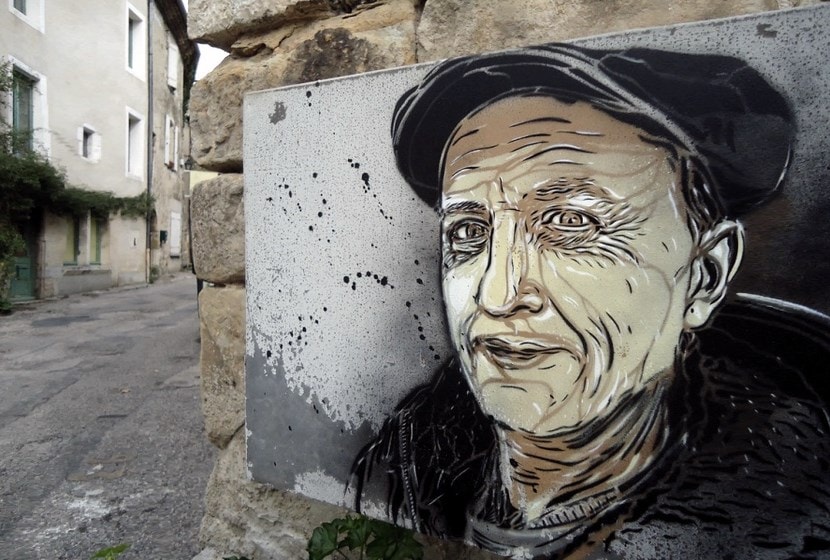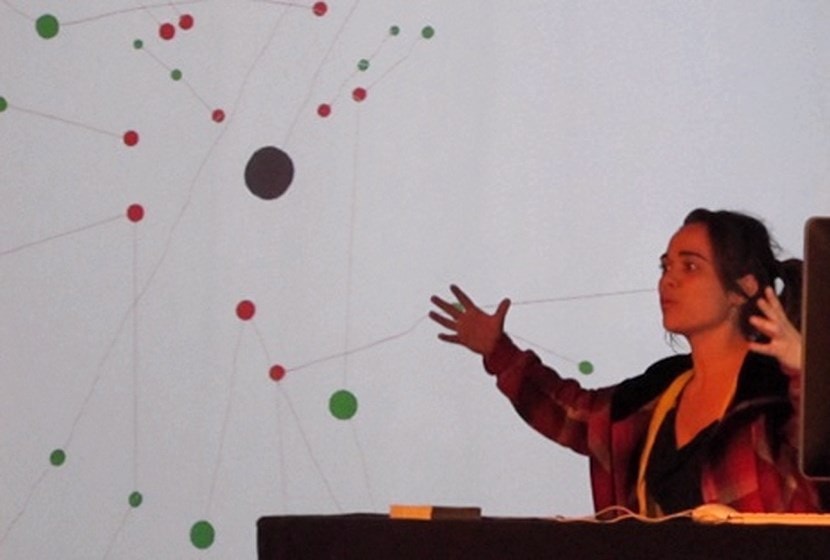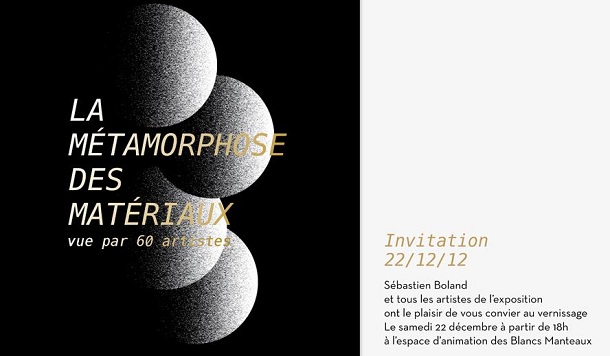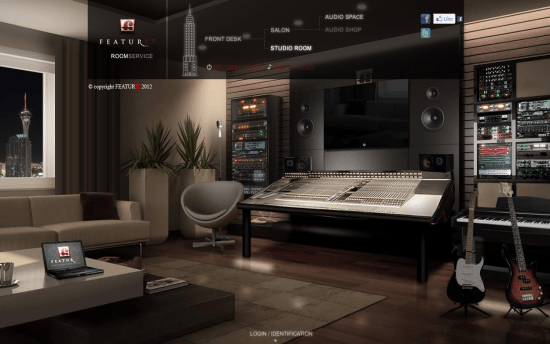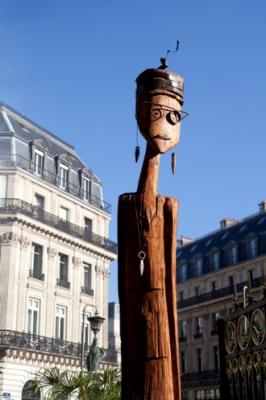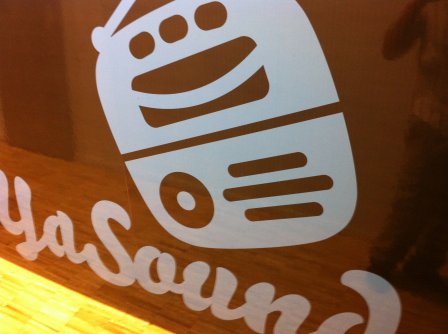Artist Honor Harger (@honorharger) is running Lighthouse, a digital cultural agency responsible for mounting productions and exhibitions to show that digital culture is not just about tools and technology, but first and foremost about emotions and learning. Its blog, the Particle Decelerator (@_decelerator), is thus in its image, at the confluence of art and technology. On the stage of Lift France 2012, she asked us the following question: What happens when artists think technology like engineers?
"Artists who use new technologies are an essential source for understanding how our world deals with technology," says Honor Harger. Take the example of the 3D printer, one of the most interesting current technologies, which can be used to build any object from its specifications. While 3D printing has the potential to change the way objects are made, the illustration of this potential by artists is not new.
 The artist and theorist of photography Laszlo Moholy-Nagy in 1923 imagined Construction in Enamel 2 kept at the Museum of Modern Art in New York. It is a work, a cross between painting and sculpture, made remotely from instructions given by the artist to a craftsman, just as the 3D printer would today allow an artist to create a work without his intervention. Senster of the cybernetic sculptor Edward Ihnatowicz (1969) is another example of achievement applied to technology. Senster was a structure capable of responding to sound and movement, and Edward Ihnatowicz was one of the first to design a computer-controlled sculpture, as presented in the Lost Art exhibit at the Tate Galery. Eduardo Kac's Genesis (1999) (Wikipedia) was the first installation to explore the links between biology and computers, producing a synthetic gene from a phrase in Genesis. As pointed out by The Guardian in AugustDNA could soon be used to store information, as the artist had suggested more than ten years earlier in his installation. Are artists always precursors?
The artist and theorist of photography Laszlo Moholy-Nagy in 1923 imagined Construction in Enamel 2 kept at the Museum of Modern Art in New York. It is a work, a cross between painting and sculpture, made remotely from instructions given by the artist to a craftsman, just as the 3D printer would today allow an artist to create a work without his intervention. Senster of the cybernetic sculptor Edward Ihnatowicz (1969) is another example of achievement applied to technology. Senster was a structure capable of responding to sound and movement, and Edward Ihnatowicz was one of the first to design a computer-controlled sculpture, as presented in the Lost Art exhibit at the Tate Galery. Eduardo Kac's Genesis (1999) (Wikipedia) was the first installation to explore the links between biology and computers, producing a synthetic gene from a phrase in Genesis. As pointed out by The Guardian in AugustDNA could soon be used to store information, as the artist had suggested more than ten years earlier in his installation. Are artists always precursors?
Art is always ahead
In 2004, Eléonore Hellio and Joachim Montessuis had with MUSH (Multi-User Sensorial Hallucination, video) imagined a media art show using a device close to the Wiimote, before it existed. In 2009, Golan Levin published an article evoking several artistic installations as prologues to what has become since our daily digital life. Art is often ahead of technical achievements... Unless it's technology companies that end up integrating art into their tools," says Honor Harger.
The numerous sensitive cartographic realizations such as Amsterdam Realtime dEster Polak (2002), the GPS Log by Thorsten Knaub (2003) or the Karosta Realtime Map (2003), show ten years before Apple's iO6 mapping blunders, how art challenges the world we live in. If art is supposed to take us into the unknown, then surely iO6 maps are art," laughs Honor Harger, laughing at last week's failed update of Apple's mapping application.
"Artists and authors of SF are familiar with the language of new media as defined by Lev Manovich. Like engineers, artists are involved in studies on the implications of technology. Often they come to the same conclusions as them, but not at the same time. This is why media art is often a good vehicle for detecting the weak signals that await us in the field of technology. »
 Time for critical engineering
Time for critical engineering
"The art world is currently sending us messages: the more coded the world is, the harder it is to decipher. The world of techno becomes more opaque as the technical infrastructure becomes more invisible. Cloud computing deconsolidates the infrastructure, the "brick and mortar". "A recent Citrix survey showed that 51 % of Americans believe that bad weather can have an effect on cloud computing... Proof that we are struggling to understand the transformations taking place.
Tomorrow, our cities will be run entirely by machines, without us knowing exactly how. Danja Vasiliev and Julian Oliver, members of the Berlin art collective Weise 7 have imagined Men in Grey (video), men who capture and collect the data that our computers exchange with the routers of the Wi-Fi hotspots we use, rewarded in 2010 at Ars Electronica. A confusing device, which deeply questions our practices, such as the said Marie Lechner at the time for Libération. :
"The Men in Grey (MIG) operate in this increasingly ambiguous grey area between what is considered private and what is public in the age of ubiquitous computing.
Image: still from the Men in Grey 2 video.
You're on the street or in a café, checking a website on your laptop or smartphone, posting status on Facebook, sharing a naughty photo or chatting sweet words to yourself, thinking you're out of sight, and now you hear a synthesized voice telling the world what you've just whispered on your keyboard. The mechanical voice emanating from the curious briefcases carried by the two Men in Grey also announces the IP number of your machine, while your message is displayed in full on the screens encrusted with their briefcases.
These bureaucratic-looking operators get in the way of unsecured wireless traffic and take control of the network. Acting as routers (that intermediate element in a network that ensures the transit of data packets), they intercept, manipulate and make visible the immaterial data flows that wander through the ether. Sometimes on giant screens, as was the case at the Media Facades festival this fall. A "manifestation of network-generated anxiety", the Men in Grey are a worrying appearance in the age of government wiretaps, Facebook spies, Google caches and Internet filtering. "We are the direct manifestation of net-generated stress... We capture and reconstruct what is hidden in the air. We are prisms, revealing the fears of the citizen network, its doubts, disillusions, desires and lies," write the authors on a black, conspiracy-like website. »
This project, which was very disturbing for those who were the victims, because it showed how fragile the networks we trust can be, was extended in 2011 by Project Newstweek, which allowed people to access what they were reading from their computers and to cache the information they were accessing re-published. This "information aggregator", which was very recently mentioned by theTracks d'Arte broadcast enables copy control of the largest press sites on a local hotspot. Two projects that draw attention to the role of network infrastructure, asking the question of who controls it and how we can be manipulated.
Video explaining how Newstweek works:
The members of the Weise 7 collective are also at the origin of the Critical Engineering Manifesto, which aims to observe the space between the production and consumption of technologies. In a recent interviewJulian Oliver explains that we have become incapable of describing our environment. For him, it is time to intervene on the hidden and opaque infrastructures that deeply impact our lives.
In the new aesthetic, the aesthetics of digital technology who invests the real, James Bridle (see his intervention at Lift 2012) explains that programmers are now writing and building the systems that define our reality.
 Another example that Honor Harger has given us: the transparency grenadeimagined by Julian Oliver (2012) - him again! -is a grenade to combat the lack of transparency of companies and governments. It captures network flows to send them to dedicated servers and make them transparent, accessible to all, like so many potential Wikileaks. City CPU by Gordan Savicic, who tries to read the city of Shenzen like a processor is another example of an installation that tries to describe our digital environment to allow us to act on it.
Another example that Honor Harger has given us: the transparency grenadeimagined by Julian Oliver (2012) - him again! -is a grenade to combat the lack of transparency of companies and governments. It captures network flows to send them to dedicated servers and make them transparent, accessible to all, like so many potential Wikileaks. City CPU by Gordan Savicic, who tries to read the city of Shenzen like a processor is another example of an installation that tries to describe our digital environment to allow us to act on it.
Media art doesn't stop at digital!
But technology doesn't just mean digital. For physicist Dyson Freeman, biology is the dominant science and the art of tomorrow will be the art of designing genomes. "In the future, the new generation of artists will write genomes as fluidly as Blake or Byron wrote verse," he explained in the New York Review of Books in 2009. Tomorrow's artists will create new plants or animals," the physicist imagined. "But that's already the case," Honor Harger recalls.
Alba (GPF Bunny), Edouardo Kac's fluorescent rabbit was born 8 years before Dyson's words. For Kac, this creation was a transgenic art project to create social commentary. The Victimless Leather Jacket (2004), this leather jacket made from mouse cells, developed by the Tissue Culture and art project (and which Régine Debatty had already evoked for us in 2006) was already using art to make us react to new forms of biological creations. The project Cuisine désincarnée (2003) produced by the same collective consisted in producing a steak from the cells of an animal that had not yet been born.
Last year Lighthouse ran a Laboratory Life in Brighton which invited artists and biologists for two weeks to create works from biology such as Anna Dumitriu's infectious textile or a tattoo made of ink and ashes of a dead person to create a tattoo-shaped memento on the bodies of her grandchildren...". Media art does not only work with digital matter," says Honor Harger, "but also with biology, physics, nanotechnology, astrophysics...".
 And Honor Harger to talk about Brillant Noise, a film composed of raw archives from NASA satellites; Nathalie Jeremijenko's Environmental Health Clinic (Wikipedia) which tries to understand the dependence of our health on our local environments; Nelly Ben Hayoun's Super K Sonic Boom which is a physical experiment to understand how neutrinos work; Markus Kayser's Solar Sinter, a 3D printer that uses the energy of the sun and desert sand to create new objects; Frederik de Wilde's nano painting is a form of nano-painting that becomes inherently invisible, showing art that cannot be seen; researcher and artist Joe Davis' biological radio (Wikipedia) is a radio that works from living organisms; Cesar Harada's Protei is a fleet of open-source robot boats designed to capture oil that has been degassed in the oceans; Bengt Sjölén's Storm radio station is a radio receiver designed to ignore intentionally transmitted signals to reveal more... And the list of amazing art projects could have been even longer.
And Honor Harger to talk about Brillant Noise, a film composed of raw archives from NASA satellites; Nathalie Jeremijenko's Environmental Health Clinic (Wikipedia) which tries to understand the dependence of our health on our local environments; Nelly Ben Hayoun's Super K Sonic Boom which is a physical experiment to understand how neutrinos work; Markus Kayser's Solar Sinter, a 3D printer that uses the energy of the sun and desert sand to create new objects; Frederik de Wilde's nano painting is a form of nano-painting that becomes inherently invisible, showing art that cannot be seen; researcher and artist Joe Davis' biological radio (Wikipedia) is a radio that works from living organisms; Cesar Harada's Protei is a fleet of open-source robot boats designed to capture oil that has been degassed in the oceans; Bengt Sjölén's Storm radio station is a radio receiver designed to ignore intentionally transmitted signals to reveal more... And the list of amazing art projects could have been even longer.
Definitely, artists are very concerned about ethics and their projects are there to ask ethical questions," Honor Harger concluded. When the Critical Art Ensemble works on bioterrorismis certainly to help us learn from it. Those who work with dangerous elements are always the ones who are most aware of safety issues. Their work both pushes the boundaries of what can be done with all these materials while pointing out their risks and potentials.
(Article by Hubert Guillaud / internetactu.blog.lemonde.fr - November 2012)
{Jacuzzi on}

